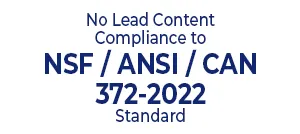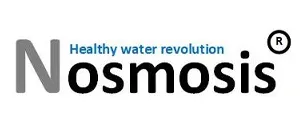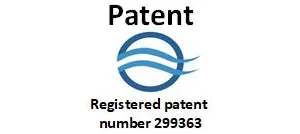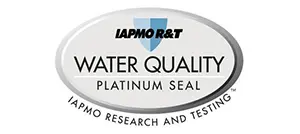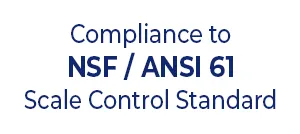Introduction: Clear Water, Hidden Contaminants
When we pour a glass of water from the tap, we expect purity. We assume that if it’s crystal clear, it’s safe. But beneath this illusion lies a growing global health crisis: microscopic plastic particles—microplastics—are now present in the drinking water of billions of people around the world.
If you live in the United States, there’s a strong chance you’re unknowingly ingesting plastic every single day.
A Disturbing Reality: America Leads the World in Tap Water Contamination
While awareness of microplastic pollution is still gaining traction globally, the U.S. already stands out for alarming reasons. A groundbreaking 2017 study revealed that 94% of tap water samples tested in the United States contained microplastic fibers. These samples weren’t collected from obscure locations—they included water from the U.S. Capitol building, the EPA headquarters, and even Trump Tower in New York City.
On average, American tap water contained 4.8 plastic fibers per 500 milliliters, nearly twice the amount detected in European samples.
What Are Microplastics?
Microplastics are defined as plastic particles smaller than 5 millimeters, with some fragments so small they are measured in nanometers. They originate from the breakdown of larger plastic products—bottles, food packaging, clothing, industrial pipes, car tires, and more. These particles infiltrate not only our water systems, but also the air, soil, and food we consume.
Their size makes them invisible to the naked eye—but not to the human body.
How Do Microplastics Get into U.S. Drinking Water?
- Industrial Scale Pollution with Inadequate Regulation
The U.S. is one of the largest plastic producers and consumers globally. With millions of tons of plastic waste generated annually and limited recycling infrastructure, microplastics frequently escape into natural ecosystems and water sources. - Outdated Municipal Infrastructure
Most American water treatment facilities are designed to reduce bacteria and sediment—not synthetic particles on the micro- or nanoscale. As a result, water that meets legal safety standards may still be contaminated with plastic particles. - Bottled Water Is Not Safer
Contrary to popular belief, bottled water often contains even more microplastics than tap water. A separate study found that over 90% of bottled water samples worldwide were contaminated with plastic fragments.Source: The Guardian – Microplastics found in more than 90% of bottled water
Why Microplastics Pose a Serious Health Risk
Scientists are raising alarms for several critical reasons:
- Cellular Penetration
Nanoplastics can breach the body’s natural barriers and enter tissues via ingestion, inhalation, or skin absorption—potentially reaching the bloodstream, liver, lungs, and brain. - Chemical Contamination
Microplastics act as sponges for environmental toxins, including BPA, phthalates, pesticides, and heavy metals. Once inside the human body, these toxins can be slowly released, disrupting hormone function, cellular activity, and immune response. - Pathogen Carriers
Plastic fragments can host dangerous bacteria, including antibiotic-resistant strains, and introduce them directly into drinking water systems.
Scientific Evidence and Public Concern Are Growing
Academic institutions across the U.S. have confirmed the widespread infiltration of microplastics:
- State University of New York at Fredonia: Found microplastics in 83% of global water samples tested
- University of California, Santa Barbara: Documented plastic particles in every layer of the marine food chain
- King’s College London: Identified airborne plastic particles in cities including New York and Los Angeles
Despite these findings, federal regulation in the U.S. remains minimal. The EPA’s microplastics research is ongoing, but enforceable standards for microplastics in drinking water are still lacking. The agency continues to assess methods for measuring microplastics, a critical step toward future regulation.
Are Home Water Filters Enough?
In most cases, no. Standard home filters, such as activated carbon or sediment filters, are not capable of trapping particles smaller than 10 microns. Microplastics and nanoplastics—which can measure less than 1 micron—pass through undetected.
The Real Solution: Advanced Water Filtration at the Micron and Sub-Micron Level
To effectively reduce microplastics from household water, filtration systems must meet an ultra-high standard—capable of filtering down to one micron or more.
Such advanced systems can decrease:
- Microplastic fibers and fragments
- Bacteria and viruses
- Toxic gases and volatile organic compounds
- Industrial chemical residues
- Heavy metal particles (lead, arsenic, mercury)
Microplastics Are Everywhere—Not Just in Water
Microplastic contamination is not limited to drinking water. Studies have detected plastic particles in:
- Beer, table salt, honey, and sugar—often contaminated during processing or packaging
- Indoor air—posing an inhalation risk in homes, schools, and offices
- Human blood and lungs—detected in recent biomedical studies
Plastic pollution is now systemic. It surrounds us—and is increasingly becoming a part of us.
If It’s in the U.S., It’s Everywhere: A Global Environmental Emergency
Plastic pollution doesn’t respect borders. Oceans, rivers, rainfall, and trade routes distribute particles globally. As Prof. Roland Geyer of UC Santa Barbara put it:
“We’ve reached the point where plastic has entered nearly every corner of the ecosystem. If we wait until the damage is obvious—it will already be too late.”
What You Can Do Right Now
- Install a high-grade filtration system capable of sub-micron purification
- Avoid single-use plastics and support plastic-free alternatives
- Contact lawmakers and demand stricter regulations on microplastic pollution
- Check your personal care products for microbeads and synthetic exfoliants
- Test your water—visual clarity does not mean safety
How TipaTech Tackles the Microplastic Crisis
TipaTech’s filtration systems, including the LotusDY and T-18 models, are purpose-built to meet the challenges of modern water contamination—including microplastics.
Key Features of TipaTech’s Technology
- Ultrafine Filtration (down to one micron or more): Captures microplastics, nanoplastics, bacteria, viruses, and chemical residues
- Multi-Stage Purification: Combines mechanical filtration with advanced adsorptive materials like activated carbon and ceramic media
- Isolated Contaminant Collection: Captured pollutants are separated from the water stream and stored safely—helping reduce the risk of recontamination
- No Plastic Breakdown: Unlike many filters that degrade over time, TipaTech cartridges are designed to maintain structural integrity
- Certified Performance: Meets NSF/ANSI 42, 61, and 372 standards, certified by IAPMO for material and safety standards.
for particle and taste reduction, with additional in-house validation for microplastic reduction
Conclusion: Clean Water Means Plastic-Free Water
The presence of microplastics in drinking water is not science fiction—it’s scientific fact. The only way to ensure the water you and your family drink is truly safe is to adopt next-generation filtration technology with comprehensive water filtration.
TipaTech’s advanced, eco-friendly filtration systems offer one of the most effective defenses against invisible pollutants—bringing water purification into the 21st century.




